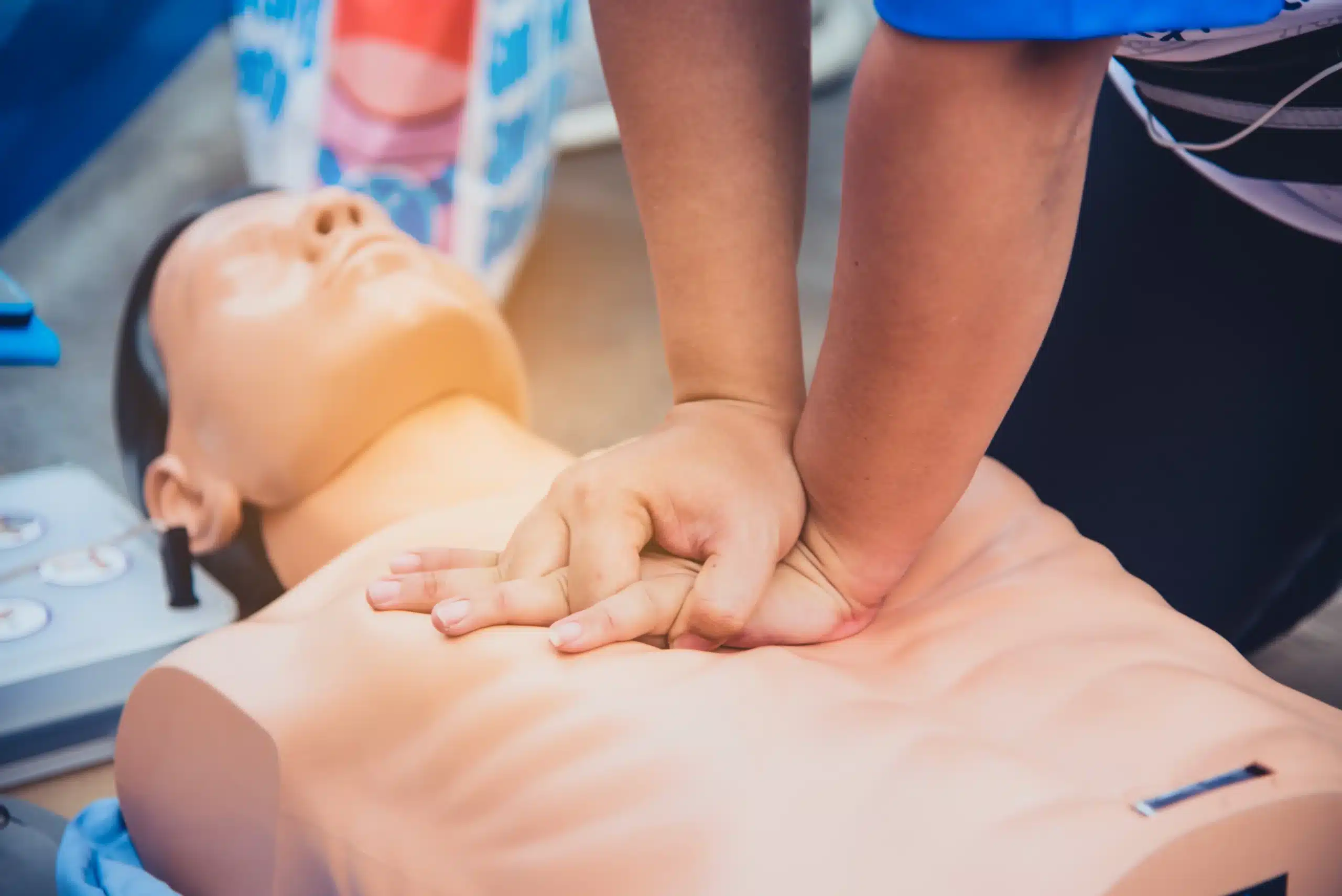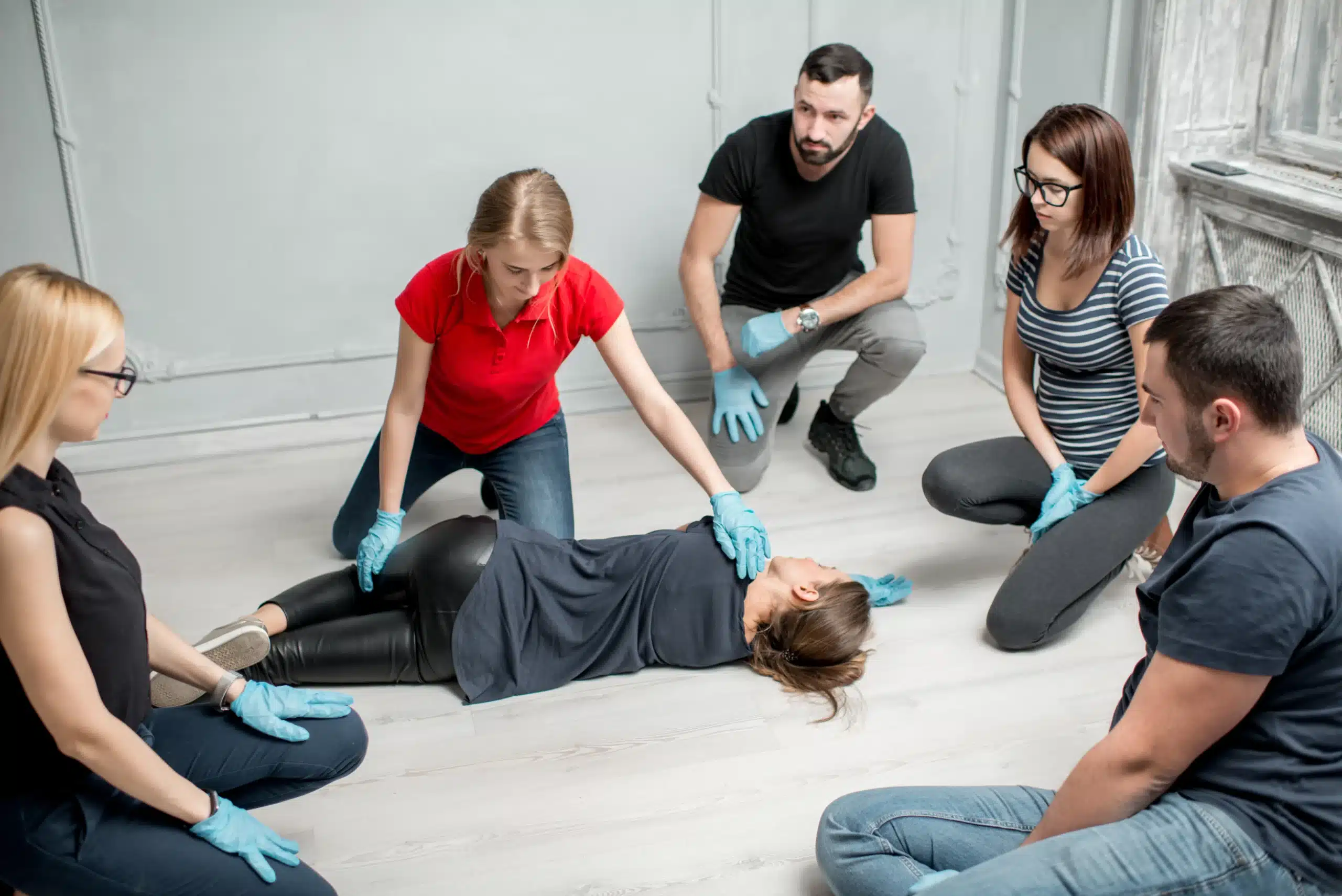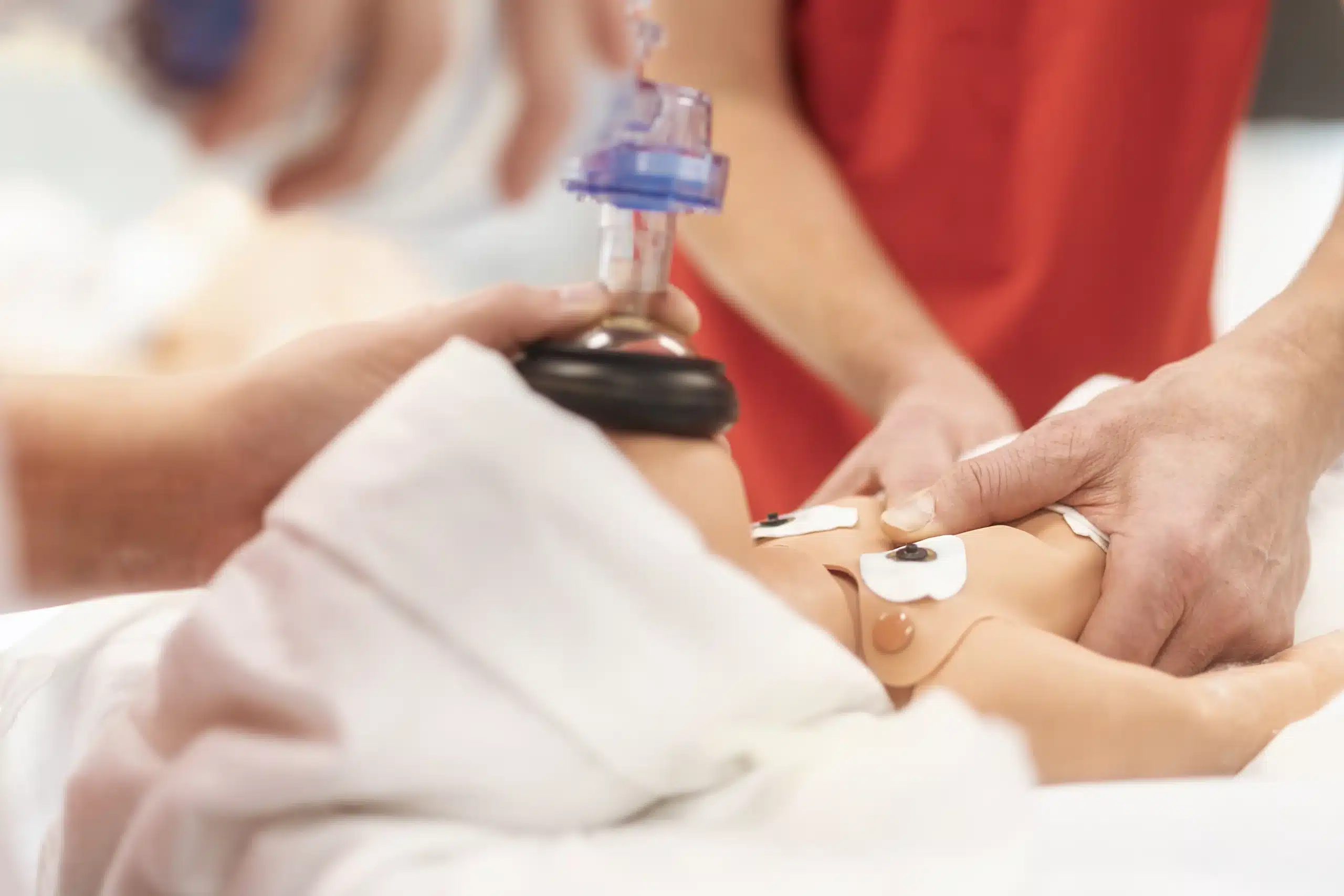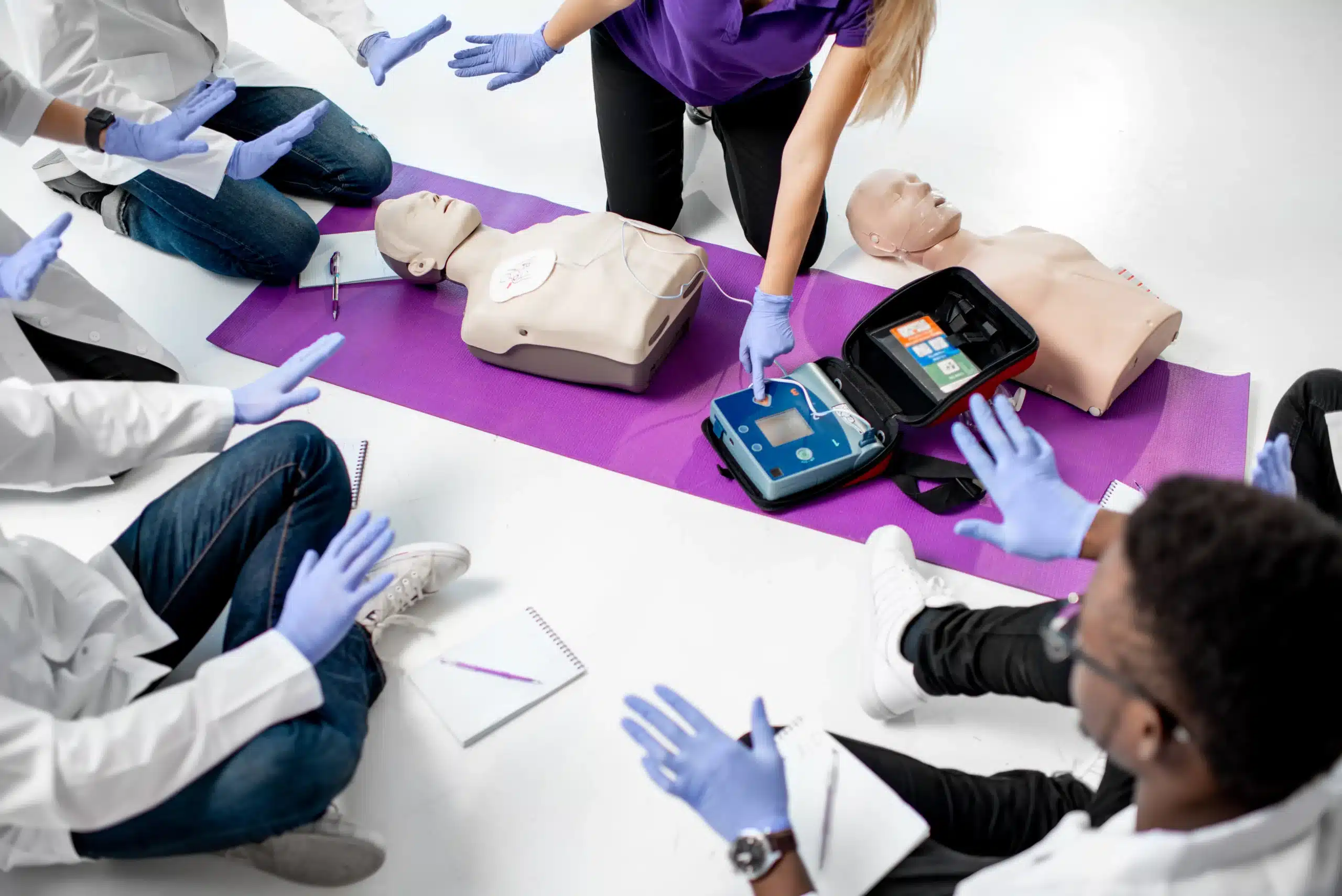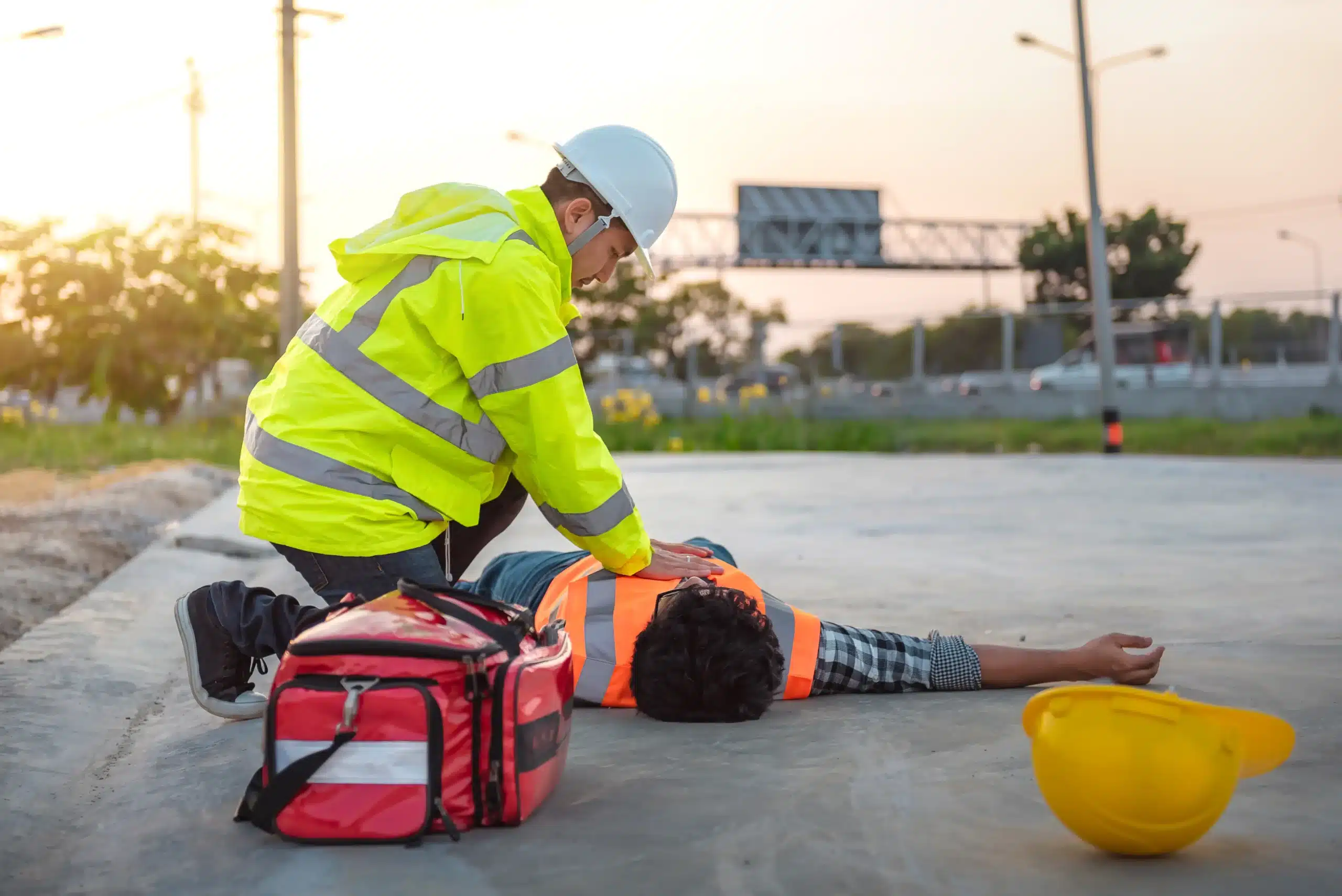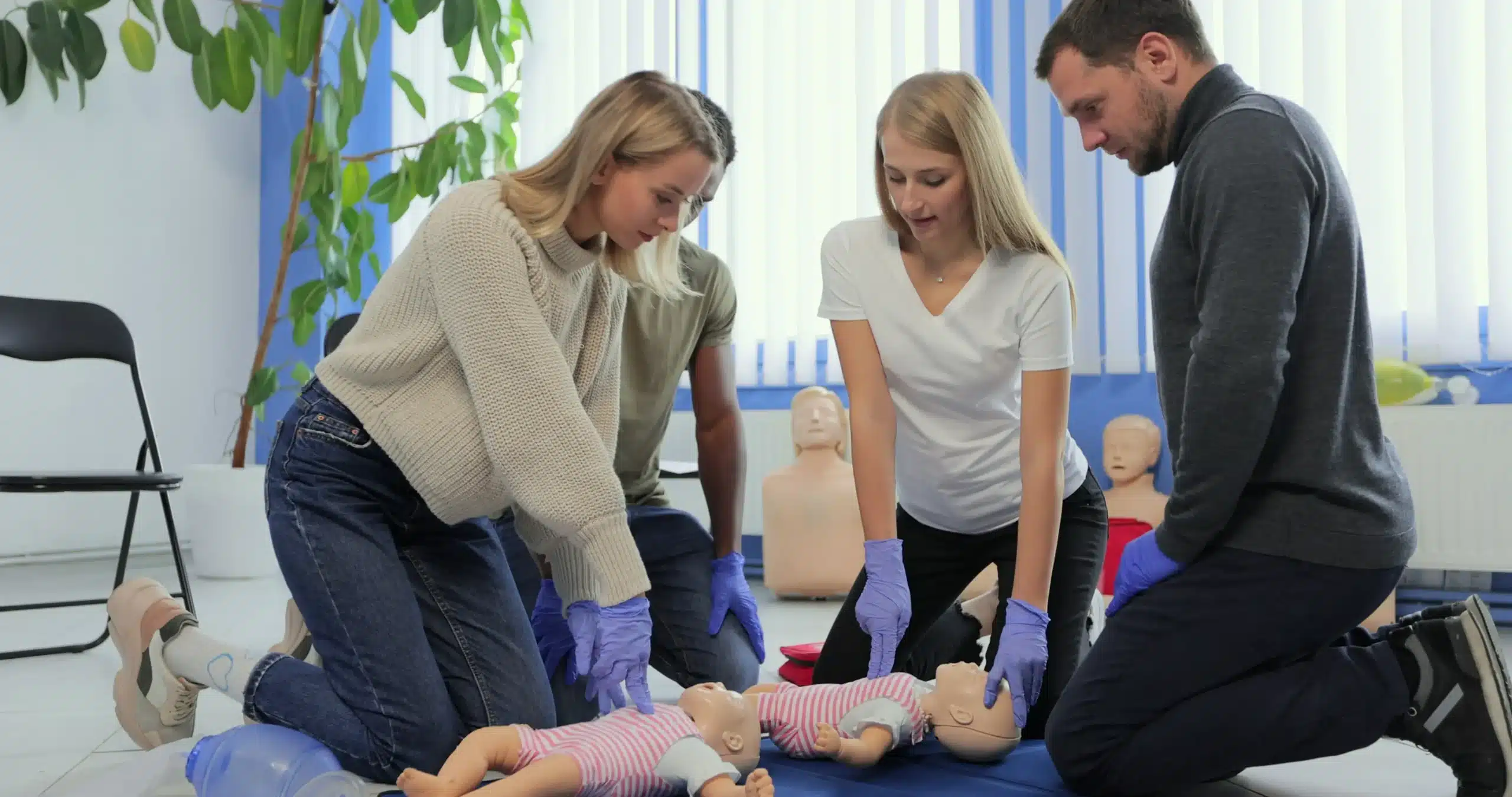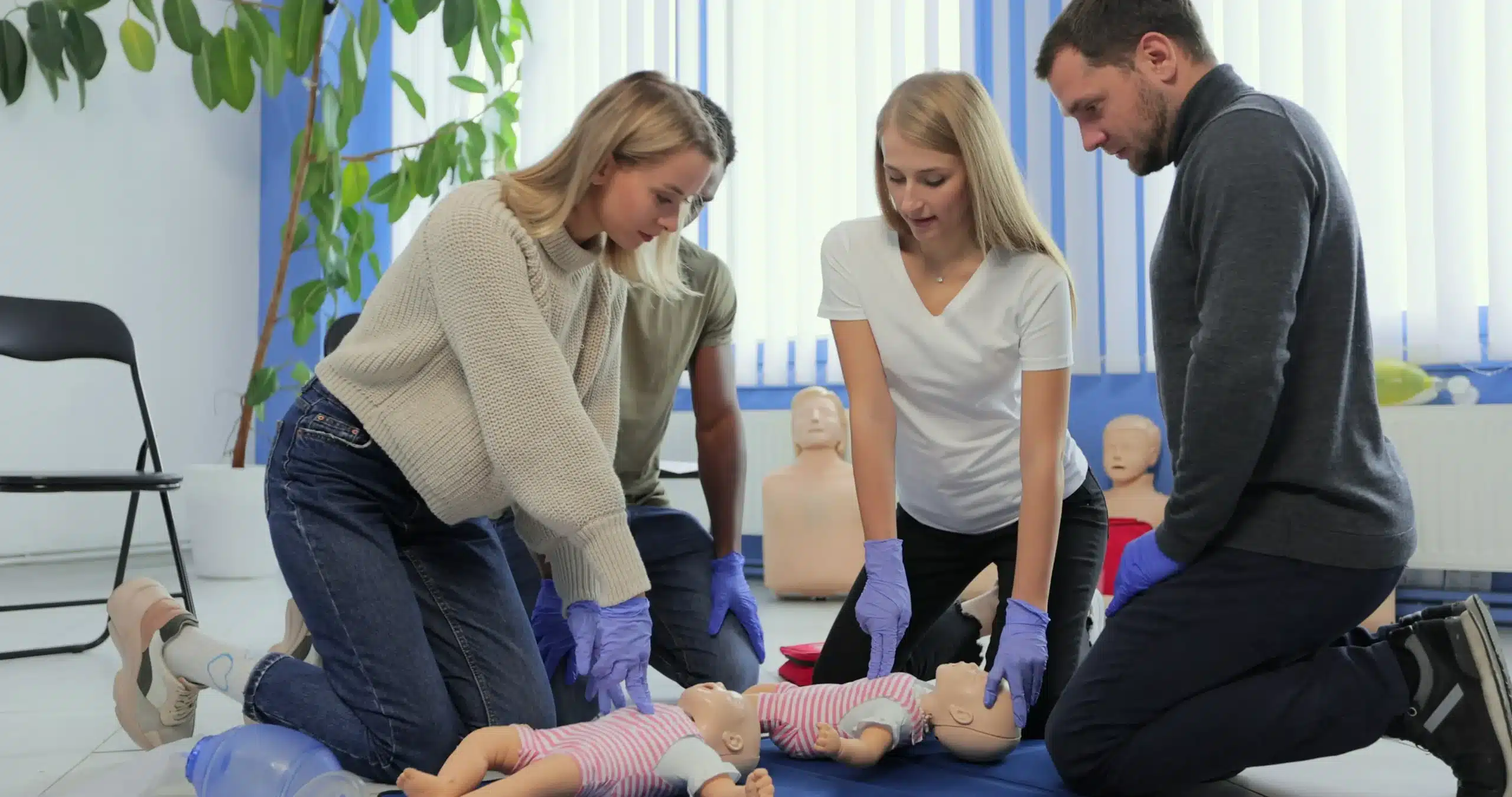Empowering yourself with life-saving skills starts with CPR training, and Oakland offers a variety of options to get certified. This guide is your one-stop resource for all things CPR training in Oakland. We’ll cover the basics of CPR, the different types of courses available, and how to choose the right one for your needs. We’ll also discuss the certification process, costs, and where to find reputable training providers in Oakland. Plus, we’ll share practical tips to help you prepare for your course and maintain your skills long after you’re certified. Let’s get started on your journey to becoming a more confident and prepared individual.
Key Takeaways
- CPR training is a powerful tool: Equipping yourself with these skills allows you to confidently respond to emergencies and potentially save a life. Find a course that aligns with your individual needs and professional goals.
- Select the right CPR course for you: Consider factors such as course content, the instructor’s experience, class size, and format (online or in-person) when making your decision. AHA-certified courses offer standardized training widely accepted by employers.
- Keep your CPR skills fresh: Regular practice and refresher courses are key to maintaining proficiency and confidence. Explore additional resources and connect with fellow CPR-trained individuals to stay informed about the latest guidelines.
What is CPR Training?
CPR training teaches you the lifesaving techniques of cardiopulmonary resuscitation, a critical procedure used when someone’s breathing or heartbeat has stopped. These classes cover essential skills like chest compressions, rescue breaths, and how to recognize the signs of a cardiac emergency. You’ll learn how to respond effectively and increase the chances of survival for someone experiencing cardiac arrest. CPR certification courses are often taught by experienced professionals and designed to be easy to understand, regardless of your background.
Why CPR Skills Matter
High-quality CPR is crucial for improving patient outcomes after cardiac arrest. Effective CPR can double or triple a victim’s chance of survival. Learning and practicing these skills empowers you to make a real difference in a life-or-death situation. Knowing CPR can give you the confidence to act quickly and effectively when every second counts.
Common CPR Training Myths
Many misconceptions surround CPR. Some believe mouth-to-mouth resuscitation is always necessary, while others underestimate the importance of chest compressions. There are also myths about the role of Automated External Defibrillators (AEDs). Learn more about common CPR myths to better understand how to provide effective assistance during cardiac emergencies.
How CPR Training Creates Safer Communities
CPR training equips individuals with the skills to respond effectively during emergencies, leading to more lives saved during cardiac events. When more people in a community know CPR, it creates a network of potential lifesavers, drastically improving the chances of someone surviving. Learn more about how CPR training creates safer communities. This training fosters safer and more resilient communities.
CPR Courses in Oakland
Finding the right CPR course in Oakland depends on your specific needs. Whether you’re a healthcare professional, a concerned parent, or simply want to be prepared for emergencies, several options are available. Here’s a breakdown of common CPR courses offered in Oakland:
Basic CPR & AED Training
Basic CPR and AED training provides foundational life-saving skills. You’ll learn how to recognize the signs of a cardiac arrest, perform chest compressions, provide rescue breaths, and use an automated external defibrillator (AED). These courses are ideal for anyone who wants to learn CPR, including teachers, coaches, and other community members. The American Red Cross offers comprehensive CPR and AED training in Oakland, with options for in-person and blended learning formats. Their expert-led classes cover primary assessments, ventilation techniques, CPR, and AED use. For those looking for the most streamlined and affordable option, Safety Training Seminars offers a Basic Life Support (BLS) certification course that covers these essential skills.
CPR & First Aid
Combining CPR and First Aid training equips you with a broader skill set to handle various emergencies. In addition to CPR and AED use, you’ll learn how to manage injuries like cuts, burns, and fractures. These combined courses are beneficial for those working in childcare, education, or other community settings. The Red Cross offers convenient CPR and First Aid training in Oakland, designed to fit busy schedules. They provide training for individuals, first responders, organizations, and even specialized programs for schools.
Pediatric CPR
Pediatric CPR courses focus on providing CPR and life-saving techniques for infants and children. This specialized training is essential for parents, grandparents, childcare providers, and anyone working with young children. CPR Certification Oakland offers American Heart Association (AHA) certified courses specifically designed for pediatric CPR. These courses cover BLS (Basic Life Support), CPR, and AED use for all ages. Safety Training Seminars also offers a comprehensive Pediatric Advanced Life Support (PALS) course for those needing more in-depth pediatric emergency training.
Advanced Cardiac Life Support (ACLS)
Advanced Cardiac Life Support (ACLS) training is designed for healthcare professionals who manage cardiopulmonary arrest and other cardiovascular emergencies. This advanced course covers topics like airway management, pharmacology, and team dynamics. Oakland Community College offers ACLS training through its affiliation with the American Heart Association (AHA). Successful completion of this course grants providers an ACLS card, valid for two years through the AHA. Safety Training Seminars also provides an ACLS course led by experienced instructors, offering a convenient option for healthcare providers in Oakland.
Top Oakland CPR Training Providers
Finding the right CPR training provider is crucial for receiving high-quality instruction and obtaining a valid certification. Here’s a look at some of the leading CPR training providers in Oakland:
Safety Training Seminars
Safety Training Seminars offers a comprehensive range of American Heart Association (AHA) certified courses, from basic CPR and first aid to advanced life support (ACLS and PALS). This ensures participants receive standardized, up-to-date training recognized by employers across the country. They also offer discounts for group classes, making it a cost-effective choice for organizations. Safety Training Seminars focuses on equipping individuals with the skills and confidence to respond effectively in emergencies. You can learn more about their BLS certification here. Their commitment to excellent customer service and low prices makes them a top choice.
American Red Cross
The American Red Cross is a well-known provider of CPR and first aid training in Oakland. Their courses are designed to be concise and convenient, often completed in just a few hours. They offer a variety of programs, including specialized training for schools and workplaces. This ensures staff, students, and community members have access to essential life-saving skills. You can explore their CPR class offerings in Oakland on their website.
CPR Certification Oakland
CPR Certification Oakland specializes in AHA-certified CPR and first aid training. With a track record of training over 50,000 students, they have established themselves as a trusted provider in the community. Their courses cover essential skills like BLS, CPR, and AED use for all age groups. They also offer same-day certification cards, which is convenient for those needing immediate proof of certification. Learn more about their programs on their website.
American Heart Association
While the AHA doesn’t directly conduct training, they set the standards for CPR education. Many organizations, like the Oakland Community College EMS Program, offer AHA-affiliated BLS and CPR training. These programs adhere to AHA guidelines, ensuring participants receive high-quality instruction and a nationally recognized CPR card valid for two years.
Berkeley CPR Classes
Berkeley CPR Classes offers convenient options for BLS certification and renewal in Oakland. They provide access to comprehensive learning materials, including manuals and online resources, to support your training. Their focus on BLS ensures participants are well-versed in the latest techniques for providing effective life support. You can find more information about their BLS renewal courses in Oakland on their blog.
Choose the Right CPR Course
Finding the right CPR course means understanding your needs, comparing options, and checking instructor qualifications. Let’s break down how to make the best choice for your situation.
Assess Your Needs & Career Requirements
Before signing up for a CPR class, think about why you’re taking it. Are you a parent wanting to be prepared for emergencies at home? Are you a childcare provider needing certification for your job? Or are you pursuing a career in healthcare, where CPR certification is often mandatory? CPR training is valuable for everyone, but certain professions, like nursing and childcare, require specific certifications. Knowing your needs will help you choose the right course. For example, healthcare providers often need American Heart Association (AHA) certification, while a basic CPR and first aid course might be sufficient for others. CPR Classes Oakland offers a variety of courses to meet different needs.
Compare Course Content & Formats
CPR courses aren’t one-size-fits-all. They vary in content and format. Some cover basic CPR and AED use, while others include first aid or pediatric CPR. Advanced courses like ACLS cater to healthcare professionals. Look for a course that aligns with your specific requirements. The Red Cross, for instance, offers specialized programs for schools and organizations, in addition to individual training. Consider what topics are covered and whether the course offers the depth of knowledge you need. Safety Training Seminars offers various levels of CPR training to meet diverse needs.
Check Instructor Qualifications & Class Sizes
The quality of your CPR training depends heavily on the instructor. Look for certified instructors with experience and a passion for teaching. AHA-certified courses offer standardized training recognized by employers, ensuring you receive credible instruction. Also, consider the class size. Smaller classes often allow for more personalized attention and hands-on practice, crucial for mastering CPR skills. AHA certifications are widely recognized and respected.
In-Person vs. Online Learning
Choosing between in-person and online learning depends on your learning style and schedule. In-person classes provide hands-on practice and direct interaction with instructors. Online courses offer flexibility, allowing you to learn at your own pace. Some providers offer blended learning, combining online modules with in-person skills sessions. This approach can be a great way to fit CPR training into a busy schedule. Consider what learning environment best suits your needs and preferences. CPR Classes Oakland offers various course formats to accommodate different learning styles.
Cost, Certification & Value
CPR training is an investment in life-saving skills. Understanding the costs, certification process, and overall value helps you make informed decisions.
CPR Course Costs in Oakland
CPR course fees in Oakland depend on the course type, the training provider, and any included certifications. Basic CPR classes typically range from $60 to $90. For example, CPR Certification Oakland offers an AHA-certified CPR class for $64.95, while their combined CPR and First Aid class costs $84.95. More specialized courses, like ACLS or PALS, usually have higher fees because of the advanced training involved. Safety Training Seminars offers a low price guarantee and competitive pricing on all courses.
Certification Process & Validity
You’ll receive a certification card after successfully completing a CPR course. Most CPR certifications, including those from the American Heart Association and the American Red Cross, are valid for two years. This certification is essential for many healthcare professionals, childcare providers, and other roles requiring CPR proficiency. The certification process typically involves a skills demonstration during the course and a written exam. Recertification is straightforward, ensuring your skills stay sharp.
Discounts & Group Rates
Many CPR training providers in Oakland, including Safety Training Seminars, offer discounts for group registrations. This is a cost-effective option for businesses, schools, or community groups training multiple people. Some providers also offer discounts for students, seniors, or other groups. Always ask about potential discounts when registering.
Recertification & Refresher Courses
While your CPR certification lasts two years, refreshing your skills more often is helpful. The American Red Cross recommends refresher training every 6 to 12 months to maintain proficiency. Regular practice helps you retain these crucial skills and stay updated on any CPR guideline changes. You can find helpful resources and information on CPR skill retention. Many providers offer refresher or shorter renewal courses to help maintain your certification.
Get the Most Out of CPR Training
CPR training is a valuable skill that can save lives. To truly benefit from your training, focus on preparation, hands-on practice, and ongoing skill maintenance. These steps will help you become a confident and effective first responder.
Prepare for Your CPR Course
Before your CPR class, take some time to familiarize yourself with the course content. Many organizations, like the Red Cross, offer resources and study materials to help you get a head start. Knowing the basics beforehand lets you focus on mastering the practical skills during the training session. Check if your chosen provider, like Safety Training Seminars, offers pre-course materials or practice tests. Being prepared also means arriving on time, dressed comfortably, and ready to participate actively. Consider reviewing basic first aid principles as well.
Practice CPR Skills Hands-On
CPR is a hands-on skill, and the more you practice, the more confident you’ll become. During your training, take advantage of every opportunity to practice chest compressions, rescue breaths, and using an AED. Don’t be afraid to ask your instructor for feedback and guidance. As the BLS Course teaches, recognizing life-threatening situations is key, so pay close attention to the scenarios presented in class and how to respond effectively. Practice with friends or family members to reinforce your learning outside of the classroom.
Maintain Your CPR Skills
CPR certification typically requires renewal every two years, but maintaining your skills is an ongoing process. Even annual recertification might not be enough for optimal skill retention, as highlighted in studies published by the National Institutes of Health. Consider refresher courses or practice sessions between certifications to keep your skills sharp. Regular practice will help you stay prepared and react quickly in a real emergency. Think of it like any other important skill—consistent practice is essential for mastery.
Find Additional Resources & Support
Many resources are available to help you maintain and expand your CPR knowledge. Organizations like the American Heart Association offer online resources, videos, and refresher courses. Connect with other CPR-trained individuals to share experiences and best practices. Staying informed about updates to CPR guidelines and techniques will ensure you’re always providing the most effective care. You can also explore additional certifications, such as First Aid or ACLS, to enhance your skillset. Consider joining online forums or communities dedicated to first responders to stay connected and informed.
Related Articles
- CPR Myths Exposed: Truth Behind Common Misconceptions
- Why CPR is Crucial in Healthcare
- Find CPR Classes Near Me: A Complete Guide – Oakland CPR Classes
- CPR Certification in Oakland: Your Guide – Oakland CPR Classes
- CPR Courses in Oakland: Your Complete Guide – Oakland CPR Classes
Frequently Asked Questions
What’s the difference between BLS and CPR?
CPR (Cardiopulmonary Resuscitation) is the actual hands-on technique used when someone stops breathing or their heart stops beating. BLS (Basic Life Support) is a broader term that includes CPR but also encompasses other life-saving interventions, such as using an AED and relieving choking. Think of CPR as one of the tools within the BLS toolkit.
How often do I need to renew my CPR certification?
Most CPR certifications are valid for two years. However, refreshing your skills more frequently is always a good idea. Even if you’re not due for recertification, consider taking a refresher course annually or even every six months to keep your skills sharp and your confidence high.
Which CPR certification is right for me?
The best CPR certification depends on your specific needs. If you’re a healthcare professional, you’ll likely need an AHA-certified BLS, ACLS, or PALS course. If you’re a parent, childcare provider, teacher, or simply want to be prepared for emergencies, a basic CPR and First Aid course might be sufficient. Consider your current job requirements and personal goals when choosing a course.
What if I’m nervous about performing CPR in a real emergency?
It’s completely normal to feel nervous about using CPR in a real-life situation. That’s why regular practice and staying up-to-date with the latest guidelines are so important. The more you practice, the more confident you’ll become. Remember, even starting CPR with chest compressions can significantly increase someone’s chances of survival.
Are online CPR courses as effective as in-person classes?
Both online and in-person CPR courses have their advantages. Online courses offer flexibility, while in-person classes provide hands-on practice with instructors. Blended learning, which combines online modules with in-person skills sessions, can be a great compromise. The most important factor is choosing a reputable provider that aligns with your learning style and schedule.


